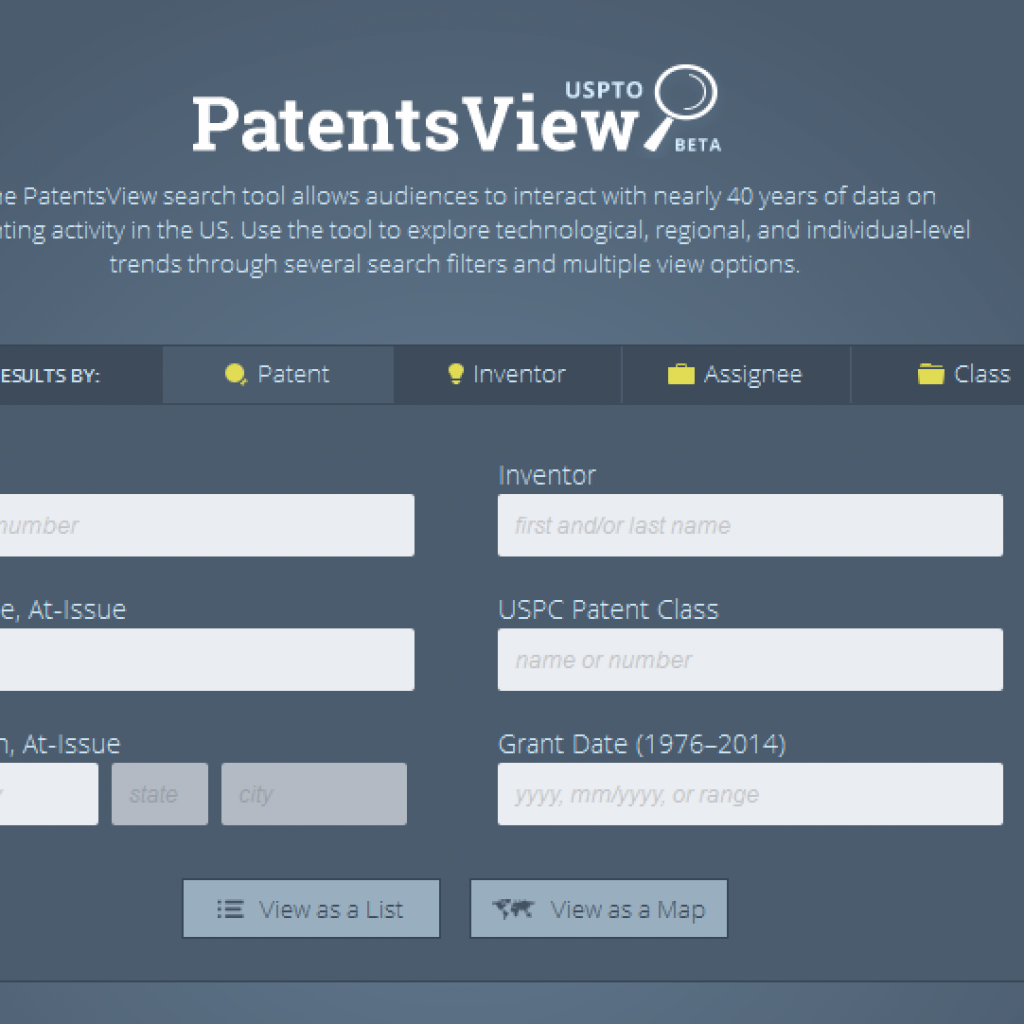Intellectual property, especially patents, are one of the most important intangible assets of a business – especially the ones that sustain majorly by inventing and innovating. Given that the development of any kind of invention consumes a lot of time and money, it only makes sense to protect the inventions by protecting/patenting them.
Getting a patent for the invention ensures that no other person claims your invention as their property. Even if someone ends up doing so – by selling a copy of your patented invention or manufacturing a product that overlaps on your patent – they could be stopped from resuming these activities with the help of cease and desist letters, and legal recourse could be taken to prevent others from benefiting from your patented invention.
Given that a patent offers its assignee the benefit to exclude others from infringing on their patent for a very long period of time (20 years from the date of filing in the US), it only makes sense that patents are not granted to every idea that is ever ideated.
Hence, patents are only granted to inventions that meet certain criteria.
Converting an idea into a patent is not easy. A patent is tested on multiple factors to ensure that it is novel, obvious, and is not similar to someone else’s invention/concept before the date of filing. Only post fulfilling all the required criteria, a patent is granted by the patent office of the particular nation.
In certain cases, if a patent is granted and upon reexamination found not to meet any particular criterion, the rights could be revoked from the inventor/assignee. We would be discussing more on this later, but it is to be noted that this is one of the most important strategies used by companies to weaken their competition’s patent portfolio.
But that’s the advanced stuff. Taking a step back – There are different kinds of patent searches that exist. While some of them are conducted before a patent is filed, others serve their purpose best only post a patent is granted. Each of these searches has its own unique purpose and reasons for being conducted.
Let’s have a look at the 4 types of Patent Search:
Patentability Search
A patentability search, otherwise known as novelty search, is conducted before filing a patent application to ensure whether the invention is new. This search is pretty important because nobody would like to lose all the hard-earned money spent on drafting and filing the patent application just because the examiner found a similar concept as your invention as the criteria for rejecting your patent application.
By performing a patentability search for prior art, the inventor, patent lawyer, or patent examiner can figure whether someone else already has had the same idea or not. If the search returns that someone has already worked on a similar idea, you can save money by not filing the application OR alter/improve your idea such that it meets the criteria of patentability.
Conducting a Novelty search helps (if not ensures) to know what are the chances that your patent may get granted. If a patentability search returns that your idea is novel and meets all the criteria for patentability, you can file your patent assured that it has a high chance of getting issued.
Given the high expenses of filing a patent and prosecuting a patent, it is always a better move to get a patentability search conducted prior to the filing of the patent application.
Benefits of a Patentability Search
Now that we are aware of what exactly a Novelty or Patentability Search is, let’s have a look at the benefits and the importance of conducting the search.
It will help you draft better claims
There is always a chance that you might have missed information related to the technology which could improve the scope of your patent. Conducting a patentability search widens your information horizons, thus making it possible to draft broader claims with increased scope.
The strength of the patent is improved
The novelty search helps in identifying additional cases that might not have been covered by the inventor. If these uncovered cases are made part of the application it may reduce the chances of your competitor using these uncovered references against you while challenging the validity of your patent.
Helps understand the value of the invention
For businesses and large companies specifically, conducting a Novelty search helps determine the uniqueness and value of the patent, while helping them understand the potential for competitiveness the patent offers.
If the invention/patent is similar to a competitor’s invention, the patent can be designed around to increase its monetization potential while offering the patent holder the freedom to operate.
Now that we are aware of the benefits patentability search offers, let’s have a look at the reason why you should hire an expert to perform a patentability search.
The Common Mistake to avoid with Patentability Searches
Before filing an application, conducting a novelty search is never a mistake. The mistake actually happens when you carry out the move i.e., the search in the wrong way.
While you can conduct the patent search on your own, you may not get the same results that a patent lawyer or a professional patent searcher could get for you. Conducting an efficient search requires a lot of research on the subject matter and is more than just a google keyword search. It goes without mention that it is a time-consuming process. If you have a ton of time in your hand and have a good understanding of the subject matter, you can perform the search on your own.
But there is always a chance that prior art exists for the invention, which would go unnoticed during your search but could be found by the examiner who would reject the grant of your patent. Thus, hiring a patent attorney is a great option as it might incur an extra cost but it is worth the result you get.
Some people might even think that there is no requirement for a novelty search, given the additional costs. By not even opting for this search, they might be committing a big mistake that they would have to pay later for. When a patent is involved in litigations, opponents often challenge the validity of the patent to escape from paying royalties. If prior art is found for the patent in question, which is a result of a lack of novelty search, in the beginning, the patent holder would not only lose potential income but also his patent rights.
So while technically there might be no need to go for novelty search, it is often better to consider it as a favorable option as preparing a provisional patent application or a non-provisional patent application consume a lot of time, effort, and money. Not protecting your bases in advance could mean losing thousands of dollars.
Freedom-to-Operate Search
When someone comes up with a patentable invention they usually forget about patents that are held by other people. Acquiring a patent on your invention merely does not gives you the right to operate.
How do you sell/manufacture your product/invention without infringing on other people’s patents? This is where freedom to operate search comes to help.
Freedom to operate refers to the ability to sell one’s product or service without infringing on the patent rights of another party. When you are granted a patent, you are granted the right to prevent people from using your patented technology. Although everyone else is stopped from infringing on your patent, you must still perform the freedom to operate search before you bring out your product in the market. If your invention uses any other kind of invention in the form of a process, the machine, or the composition of matter, then the freedom to operate of your product in the market becomes questionable. You run the risk of infringing on someone else’s IP, which comes with its own set of consequences.
For instance, a person who invented the concept of attaching an eraser tip to be placed on the end of a pencil could patent the invention. However, there may be many patents, owned by others, on erasers, glue or the process of attaching them, that may prevent your product to freely operate in the market. Your own patent does not make you safe.
What is Freedom to Operate Search?
A Freedom to Operate search is a due diligence process that focuses on finding out any active patents or pending patent applications that may hinder your freedom to operate.
To determine the freedom to operate in the market, a specialized search is requisite, which is termed as a freedom-to-operate search or FTO Analysis.
Why is conducting FTO Search Important?
This process is quite important as it provides you with a risk assessment of your product getting into a legal suit in the near future. It also allows you to check on risk assessment for patent infringement. Not only that, conducting an FTO Search helps you get a clear idea about the licensing needs and even helps you to move product development in the right direction.
What to do if there exist patents which limit your freedom to operate?
If there is a limitation posed by a patent/(s) in your freedom to operate, then you can choose any of the following options:
- Contact the patent holder for Sale/Licensing of Patent
Reach out to the patent holder and ask her/him if s/he could sell you the patent. If the patent holder does not want to sell, you can seek a license for that patent.
- Go for cross-licensing
If your product is of value to the other patent holder, you can go for cross-licensing. In this case, both the parties can give each other the license of using their invention.
- Design around the features in the product
Since after the freedom to operate search you know the risk associated with a particular feature in your product, you can design around the existing patents and introduce a new feature in your product that does not overlap on any existing patent. This strategy is used by many large companies to minimize their risk.
Why is Freedom to Operate Complex?
Setting up Freedom to Operate is not an easy process. There are a great number of patents already in existence and moreover, thousands of them are granted every week. If you are launching the product in multiple countries then you have to access your risk in each of those countries to get the freedom to operate opinion. You have to go through the claims of the relevant patents granted in these countries to understand if their claims can be interpreted in a way that they can overlap the features of your product. This process requires focus and time.
Patent Invalidity Search
Patent Validity Search or Invalidity Search is a form of search that is conducted to identify references that can question the validity/enforceability of the claims of the patent that is issued by the patent office.
These searches may be referred to differ based on the objective with which the search is being performed. Validity searches are often performed by patent holders or buyers before asserting, licensing, buying, or selling a patent to confirm the enforceability of the claims. These searches can help understand whether the patent in question can survive a validity attack, and thus help one take a better-informed and stronger negotiating stance.
Why do you need a Patent Validity or Invalidity Search?
Patent examiners normally have constrained time and resources to conduct their prior art searches. By some accounts, the Patent Examiner spends an average of about 12 hours per case to conduct a prior art. Given such limited resources, it’s difficult for the Examiner to explore everything that is out there. This implies that if the patent is challenged it could put the validity of the patent at risk. In litigation, the defendant can use the result of a patent invalidity search to try and overthrow the patent in court or by filing a petition for IPR.
What is the Scope of a Patent Invalidity Search?
As the entire Patent Infringement lawsuit depends on either the validity of the patent or proving that the product is not infringing. If we talk about invalidity, the new documents uncovered via the search must be better than the prior art on record revealed earlier by the Patent Examiner. Thus, a patent invalidity search is an all-out spell on the patent.
Now that we are aware of the relevance and scope of the search, let us have a look at the reasons when a patent invalidity search is warranted.
What are the reasons for conducting a Patent Invalidity Search?
The reasons for conducting a patent invalidity search are:
- When a complaint of patent infringement is received from a patent owner.
- When a cease and desist notice is received from the patent owner.
- Prior to enforcing your own patents to regulate invalidity risks.
- Prior to buying a patent to explore the strength of the patent
- Oppose a recently issued patent of a competitor
Given that these are highly specialized searches, they are best left to experts like attorneys or patent search firms. When these searches are ordered, here are a few essentials that need to be provided to the party performing the search.
What are the essentials to be provided for a Patent Invalidity Search?
The documents which are to be provided for a patent invalidity search are:
- Patent number and the detailed claims which you need to overthrow (till the time the entire claim set is at issue).
- The target priority date.
- The prior art that is already known to you
- Objective behind conducting a validity search
State of the Art Search
To gain an overall perspective of a particular patent field, a State of the Art patent search is conducted over all the broad list of patent searches. It provides a longtime market advantage, by helping make strategic decisions at the corporate level.
How it does that?
Normally when we talk about Patent Search, they have quite a short-term focus which is narrow in use. The main concern is normally the novelty of a particular invention or the invalidity of an individual patent. On the other hand, a State of the Art search dives deep for a larger view.
What is State of the Art Search?
In a particular field, a State of the Art Patent Search is a comprehensive review of all the patent or non-patent literature. The main aim is to make a big picture of the state of play in a defined technology field. All the non-patent literature in a particular field can also be included in it. Patent Landscape Search is also present which is another way of assessing the State of the Art and attaining a more visual indication of what is going on.
When is State of the Art Patent Search required?
The State of the Art patent search is useful in two situations:
- When you want to determine the research direction;
- Upon entering a new field either through investment or acquisition; or
- Just to check what is out there.
Let’s have a look at both of these scenarios in detail.
Entering a New Field
Before entering a new field, a State of the Art Search should be carried out to get a clear picture of the latest developments and the areas of the field that have been pursued beforehand. It can be a great aid to find out the competitiveness of a particular field and the likelihood of long-term profitability.
Finding out Research Direction
A State of the Art search can be helpful for organizations that are already active in a particular area to determine the most suitable future direction for their research by understanding the latest developments in the field or by rethinking what has been done in the past.
What to search in a State of the Art Patent Search?
A State of the Art Patent Search is done to captures all relevant references that relate to the technology of interest. Generally, if we have to compare, when you are going for this type of search, the technology of interest is a bit broader than what you would select when you are going for a patentability search. It should be wide enough to capture relevant ones but at the same time should not unrelated documents.
Why State of the Art Patent Searches are counted as a wise investment
Corporate strategy for a majority of the organizations is often in sync with IP strategy, and it difficult to formulate an IP strategy without an idea of the existing state of the art i.e. what are other companies in the domain are doing. This is where the search serves as a ray of light as it helps organizations ensure their current course is still the most likely to bring out the best result for shareholders and investors. In today’s age, Data>Opinions and state of the art provides just the right data that helps C-suites make better-informed decisions. In other words, it’s just the wisest investment that helps make otherwise investments.

Conclusion
We explored four different yet some of the most important types of patent searches that exist. Each has its own relevance and its own set of applications. Some of them are not even mandatory but are a wise investment, which reaps its returns in the long run.
To give an analogy, consider them like buying an umbrella. It doesn’t rain often but when it does, the umbrella protects you from getting drenched in the rain. If you consider that the chances of rain aren’t much and not have one and when it actually rains, you are the one getting drenched. These searches are just like the umbrella, you might not always need them, but when it rains, you’d be thankful to have it by your side.
Now you know the different types of patent searches, let’s look at the different platforms where you can perform these patent searches. Click on the link to know about Patent Databases: 12 Best Free and Paid Search Platforms.










